Hair loss can be a distressing experience for individuals of all ages, impacting self-esteem and confidence. Fortunately, medications like finasteride offer a viable solution, with the potential to slow down hair loss and promote regrowth. However, achieving meaningful results with finasteride requires patience, commitment, and a clear understanding of the treatment process.
In this guide, we'll delve into the fundamentals of how finasteride works, set realistic expectations for the early stages of treatment, and explore the gradual progression of results over time. From the initial months of laying the groundwork for future growth to the noticeable improvements seen after twelve months and beyond, we'll provide you with a roadmap for your finasteride journey.
Understanding the Progression: A Guide to Finasteride Treatment Results

Embarking on a journey with finasteride for hair loss treatment requires patience and a clear understanding of the expected progression. This guide aims to provide insights into the stages of finasteride treatment results, helping you navigate your hair restoration journey with confidence.
Grasping the Basics: How Finasteride Works
Before diving into the progression of finasteride treatment results, it's crucial to grasp the mechanism of action behind this medication. Finasteride, a 5-alpha reductase inhibitor, works by reducing the conversion of testosterone into dihydrotestosterone (DHT) — the primary hormone responsible for male pattern baldness. By inhibiting DHT production, finasteride aims to slow down hair loss and promote hair regrowth over time.
Setting Expectations: Early Days with Finasteride
In the initial stages of finasteride treatment, it's essential to set realistic expectations. While the medication begins to inhibit DHT production shortly after administration, visible changes in hair growth typically take time to manifest. During the first few months, ranging from one to three, you may not observe significant alterations in your hairline or overall hair density. This period is characterized by the medication laying the groundwork for future improvements rather than immediate visible results.
Milestone Achieved: Twelve Months and Beyond
By the twelve-month milestone, you can expect more noticeable results from finasteride treatment. Studies have demonstrated significant increases in hair count, thickness, and scalp coverage among individuals using finasteride consistently for one year. While individual outcomes may vary, many experience a substantial improvement in hair growth and a reduction in hair loss, contributing to a fuller and healthier-looking mane.
How Finasteride Works: Insights into Its Mechanism for Hair Regrowth
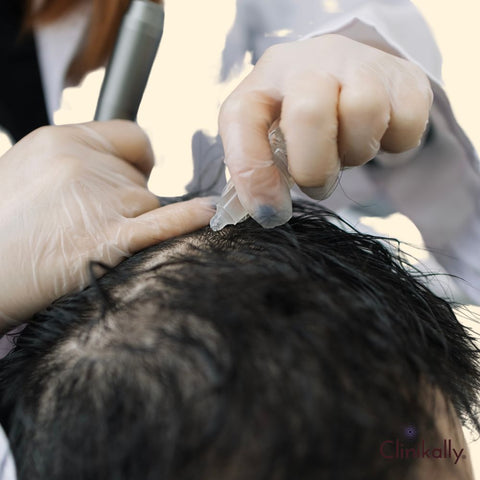
Understanding the mechanism of action behind finasteride is essential for anyone considering or undergoing treatment for hair loss. In this segment, we'll delve into the intricate workings of finasteride and how it facilitates hair regrowth.
-
Role of DHT in Hair Loss:
-
DHT, or dihydrotestosterone, is a potent androgen hormone derived from testosterone.
-
It binds to receptors in the scalp, particularly in individuals genetically predisposed to androgenetic alopecia.
-
This binding triggers a series of cellular events that lead to the miniaturization of hair follicles.
-
Over time, miniaturized follicles produce thinner, weaker hairs, eventually leading to visible hair loss.
-
Inhibiting DHT Production:
-
Finasteride works by inhibiting the enzyme 5-alpha reductase, which is responsible for converting testosterone into DHT.
-
By blocking this enzyme, finasteride reduces the levels of DHT in the scalp and bloodstream.
-
With lower DHT levels, the destructive effects on hair follicles are mitigated, allowing for a conducive environment for hair regrowth.
-
Stimulating Hair Follicle Activity:
-
With reduced DHT levels, dormant hair follicles have the opportunity to awaken from their resting phase.
-
Finasteride promotes the transition of hair follicles from the telogen (resting) phase to the anagen (growth) phase of the hair growth cycle.
-
This transition stimulates the production of thicker, more robust hairs, resulting in improved scalp coverage and density.
-
Patience and Persistence:
-
The effects of finasteride on hair regrowth are not immediate and require consistent, long-term use.
-
It may take several months before noticeable improvements in hair density and thickness are observed.
-
Patience and persistence are key virtues for individuals undergoing finasteride treatment, as the process of hair regrowth is gradual.
-
Complementary Therapies and Lifestyle:
-
While finasteride is effective on its own, it can be complemented by other therapies to enhance results.
-
Minoxidil, a topical solution, can be used alongside finasteride to further stimulate hair growth and improve scalp health.
-
Additionally, adopting a healthy lifestyle, including a balanced diet rich in essential nutrients and stress management techniques, can support overall hair health and optimize treatment outcomes.
Managing Expectations: The Finasteride Results Timeline Explained
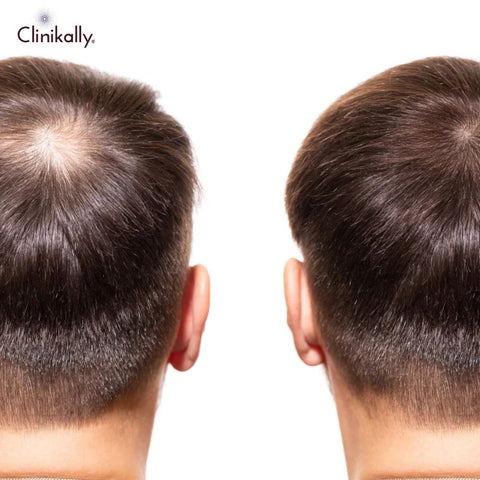
Here, we delve into the nuanced progression of finasteride treatment, providing insights into what to anticipate at each stage.
Key Points:
-
Initial Phase (0-3 Months):
-
Little to no visible changes in hair growth.
-
Finasteride begins inhibiting DHT production.
-
Foundation laid for future hair regrowth.
-
Early Progress (3-6 Months):
-
Subtle improvements may become noticeable.
-
Reduction in hair loss observed.
-
Hair thickness and coverage may slightly improve.
-
Significant Progress (6-12 Months):
-
Noticeable increase in hair growth and density.
-
Hairline and crown may show substantial improvement.
-
Studies demonstrate significant hair count increase.
-
Long-Term Maintenance (12+ Months):
-
Sustained benefits with continued finasteride use.
-
Maintenance of improved hair growth and density.
-
Long-term studies show continued efficacy over years.
Understanding the Timeline Table:
|
Timeline Phase |
Description |
|
Initial Phase |
- 0-3 months: Little visible change. Finasteride starts inhibiting DHT. Foundation laid for future regrowth. |
|
Early Progress |
- 3-6 months: Subtle improvements. Reduction in hair loss. Slight increase in thickness and coverage. |
|
Significant Progress |
- 6-12 months: Noticeable increase in growth and density. Substantial improvement in hairline and crown. Significant hair count increase. |
|
Long-Term Maintenance |
- 12+ months: Sustained benefits with continued use. Maintenance of improved growth and density. Continued efficacy over years demonstrated in long-term studies. |
Addressing Concerns: Common Questions About Finasteride Side Effects
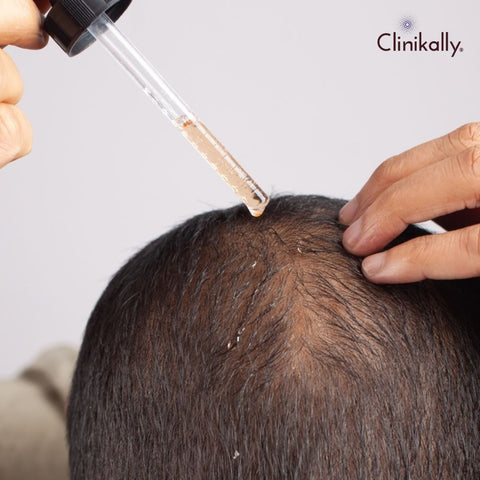
Navigating the decision to use finasteride for hair loss treatment often involves considerations about potential side effects. Below, we delve deeper into common questions and concerns regarding finasteride's side effects, offering insights to alleviate apprehensions and promote informed decision-making.
1.Sexual Side Effects:
While sexual side effects are possible, they occur in a small percentage of users.
Common side effects include decreased libido and erectile dysfunction.
Data shows similar occurrence rates in placebo groups, suggesting factors beyond finasteride may contribute to these effects.
2.Other Potential Side Effects:
Alongside sexual side effects, individuals may experience mild symptoms such as testicular pain and mood changes.
Serious side effects are rare but warrant prompt medical attention if experienced.
3.Risk Management:
Regular monitoring by healthcare providers is essential to address any emerging side effects.
Most side effects are reversible upon discontinuation of finasteride.
Understanding the risk-benefit ratio empowers individuals to make informed decisions about their treatment plan.
4.Clarifying Misconceptions:
Misconception: All users experience sexual side effects with finasteride.
Reality: Sexual side effects are relatively uncommon and may not affect all users.
Misconception: Finasteride is solely responsible for all reported side effects.
Reality: Other factors, including placebo effects and individual health conditions, may contribute to reported side effects.
Assessing the Journey: Tracking Your Finasteride Treatment Progress
Tracking your progress while undergoing finasteride treatment for hair loss is crucial for evaluating the effectiveness of the medication and making informed decisions about your hair care regimen. In this segment, we explore methods for monitoring and assessing your finasteride treatment progress to ensure optimal outcomes.
Key Points:-
Photo Documentation:
-
Capture monthly photos of your hairline, crown, and other affected areas under consistent lighting conditions.
-
Compare photos over time to identify changes in hair density, thickness, and overall growth.
-
Journaling Symptoms:
-
Keep a journal to record any changes in hair loss patterns, shedding, or new hair growth.
-
Note any side effects experienced, including their frequency and severity.
-
Scalp Examination:
-
Conduct regular scalp examinations to assess for signs of improved follicle activity or any adverse reactions.
-
Monitor for changes in scalp health, such as reduced inflammation or increased sebum production.
-
Consultation with Healthcare Provider:
-
Schedule periodic follow-up appointments with your healthcare provider to discuss treatment progress.
-
Share your documented observations and any concerns to receive personalized guidance and adjustments to your treatment plan.
Benefits of Tracking Your Progress:
-
Objective Evaluation: Photo documentation provides visual evidence of changes in hair growth, allowing for objective evaluation of treatment effectiveness.
-
Early Intervention: Regular monitoring enables early detection of potential side effects or treatment inefficacies, facilitating timely intervention.
-
Informed Decision-Making: Tracking progress empowers individuals to make informed decisions about continuing or modifying their treatment regimen based on observed outcomes.
Documenting Changes: The Importance of Before-and-After Comparisons
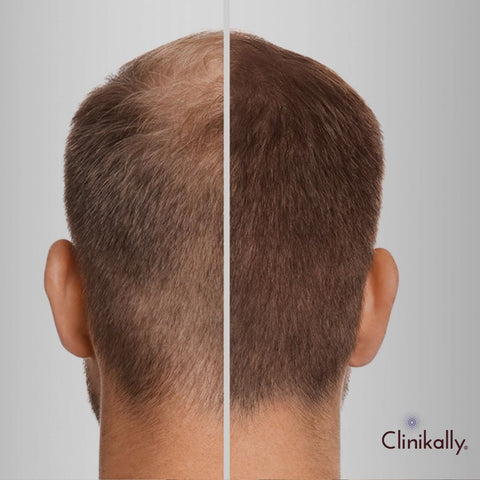
When embarking on a journey with finasteride for hair loss treatment, documenting changes through before-and-after comparisons is invaluable for tracking progress and evaluating the effectiveness of the medication. In this segment, we delve into the significance of before-and-after comparisons and how they can enhance your finasteride treatment experience.
-
Visual Evidence of Progress:
-
Before-and-after photos provide visual evidence of changes in hair density, thickness, and overall growth.
-
Comparing photos over time allows for a clear assessment of treatment efficacy and identifies subtle improvements that may not be immediately noticeable.
-
Objective Evaluation:
-
Photos offer an objective means of evaluating treatment progress, free from subjective perceptions or biases.
-
By objectively documenting changes, individuals can make informed decisions about continuing or modifying their treatment regimen.
-
Motivation and Encouragement:
-
Seeing tangible improvements in hair growth through before-and-after comparisons serves as motivation and encouragement to remain committed to the treatment plan.
-
Positive changes captured in photos reinforce the belief that finasteride is working effectively, boosting confidence and morale.
-
Communication with Healthcare Provider:
-
Before-and-after photos serve as valuable visual aids during consultations with healthcare providers.
-
Sharing documented progress enables providers to assess treatment efficacy, make informed recommendations, and tailor the treatment plan to individual needs.
Tips for Effective Before-and-After Comparisons:
-
Ensure consistent lighting, angles, and hair styling in before-and-after photos for accurate assessment.
-
Take photos from multiple angles, including front, top, and sides, to capture comprehensive views of hair growth.
-
Store photos in a designated folder or album, organized by date, for easy reference and comparison.
Experiences with Finasteride
Exploring the experiences of individuals undergoing finasteride treatment for hair loss provides valuable insights into the real-world efficacy and impact of the medication. In this section, we delve into personal accounts and anecdotes shared by individuals who have used finasteride, shedding light on their experiences, challenges, and successes.
Key Themes:
-
Effectiveness and Results:
-
Individuals share their observations of hair regrowth, increased thickness, and overall improvement in hair quality after using finasteride.
-
Success stories highlight the positive impact of the medication in halting hair loss and restoring confidence.
-
Side Effects and Tolerability:
-
Some users discuss experiencing mild side effects such as decreased libido, erectile dysfunction, or mood changes during finasteride treatment.
-
Others share their experiences of minimal to no side effects and high tolerability to the medication.
-
Treatment Duration and Consistency:
-
Users emphasize the importance of consistency in taking finasteride as prescribed, highlighting the gradual nature of results and the need for long-term commitment.
-
Experiences vary regarding the duration required to notice visible improvements, with some individuals seeing changes within months, while others require more extended periods.
-
Combination Therapies and Lifestyle Factors:
-
Several individuals discuss complementing finasteride treatment with other therapies such as minoxidil or scalp massages to enhance results.
-
Lifestyle factors, including diet, exercise, and stress management, are also cited as contributing to overall hair health and treatment success.
Navigating Side Effects: Tips for Managing Potential Adverse Reactions
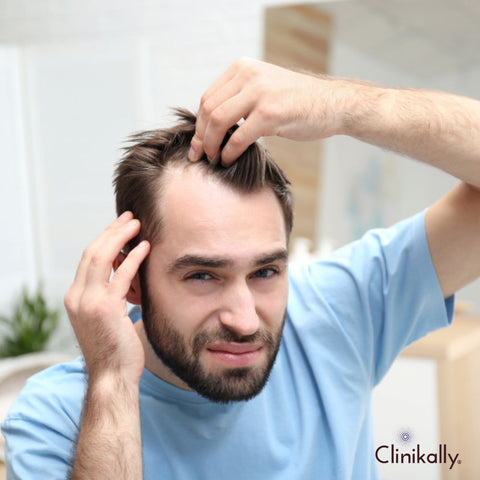
While finasteride is generally well-tolerated, some individuals may experience side effects during treatment. Navigating these potential adverse reactions effectively is essential for maintaining treatment adherence and achieving optimal outcomes. In this section, we provide practical tips for managing common side effects associated with finasteride.
Key Strategies:
-
Open Communication with Healthcare Provider:
-
Maintain open and transparent communication with your healthcare provider regarding any side effects experienced.
-
Report any symptoms promptly to receive timely guidance and support.
-
Understanding Common Side Effects:
-
Educate yourself about common side effects associated with finasteride, including decreased libido, erectile dysfunction, and mood changes.
-
Recognize that while these side effects are possible, they occur in a minority of users and are often reversible upon discontinuation of the medication.
-
Monitoring and Documentation:
-
Keep a journal to document any side effects experienced, including their frequency, severity, and duration.
-
Regularly monitor changes in symptoms to track their progression over time.
-
Exploring Alternative Treatment Options:
-
If side effects persist or become intolerable, discuss alternative treatment options with your healthcare provider.
-
Consider exploring topical finasteride or other hair loss treatments that may have a lower risk of systemic side effects.
-
Addressing Lifestyle Factors:
-
Prioritize overall health and well-being by maintaining a balanced diet, regular exercise routine, and stress management practices.
-
Adopt healthy lifestyle habits that support hair health and minimize the risk of side effects.
-
Seeking Support and Resources:
-
Connect with online communities or support groups for individuals undergoing finasteride treatment to share experiences and gain insights from others.
-
Utilize resources provided by healthcare providers or reputable sources to educate yourself about potential side effects and coping strategies.
Optimizing Your Hair Health: Strategies Beyond Finasteride

While finasteride is a valuable tool in the management of hair loss, optimizing overall hair health involves a multifaceted approach that extends beyond medication alone. Holistic methods for hair growth provide an extra layer to traditional treatments like finasteride by addressing root causes and boosting overall hair health. By combining these methods with your routine, you can support hair growth from different angles and improve your journey to restore hair.
Key Strategies:
-
Healthy Diet and Nutrition:
-
Ensure a balanced diet rich in essential nutrients such as vitamins A, C, D, and E, as well as omega-3 fatty acids and biotin.
-
Incorporate foods known to support hair health, including leafy greens, lean proteins, nuts, seeds, and fatty fish.
-
Scalp Care and Hygiene:
-
Maintain good scalp hygiene by washing your hair regularly with a gentle shampoo and conditioner.
-
Consider using scalp treatments or massage techniques to stimulate blood flow and promote follicle health.
-
Stress Management:
-
Practice stress-reduction techniques such as meditation, deep breathing exercises, yoga, or mindfulness to minimize cortisol levels, which can contribute to hair loss.
-
Prioritize adequate sleep and relaxation to support overall well-being and hair growth.
-
Regular Exercise:
-
Engage in regular physical activity to improve circulation and promote nutrient delivery to the scalp.
-
Choose activities you enjoy, whether it's jogging, swimming, cycling, or yoga, to make exercise a sustainable part of your routine.
-
Avoidance of Hair-Damaging Habits:
-
Minimize heat styling, chemical treatments, and tight hairstyles that can cause damage and breakage to hair follicles.
-
Be gentle when handling wet hair to prevent breakage, and use a wide-tooth comb or soft brush to detangle.
-
Supplements and Topical Treatments:
-
Consider supplementing your finasteride treatment with topical minoxidil, a proven hair growth stimulant.
-
Explore supplements containing ingredients like biotin, saw palmetto, and zinc, which may support hair health and growth.
-
Regular Hair Checks and Consultations:
-
Schedule periodic check-ups with a dermatologist or trichologist to assess hair health and monitor progress.
-
Discuss any concerns or changes in hair condition to receive personalized recommendations and adjustments to your regimen.
Holistic Approaches: Complementary Methods for Hair Restoration

Besides regular treatments such as finasteride, holistic methods for hair growth cover a variety of extra techniques that deal with the root causes of hair loss. In this part, we'll look into different holistic strategies and therapies that can boost the success of your efforts to restore hair.
Important Methods:
Nutritional Supplements:
Take supplements with vitamins, minerals, and herbs known to help hair health, like biotin, zinc, iron, saw palmetto, and horsetail extract.
Talk to a healthcare provider or nutritionist to know the right amount to take and ensure it won't clash with any other medicines you're using.
Scalp Massage and Acupressure:
Boost blood flow to your scalp by regularly massaging it or using acupressure techniques.
These actions can improve how nutrients reach your hair follicles and encourage hair growth.
Aromatherapy:
Apply essential oils like rosemary, peppermint, lavender, and cedarwood, believed to stimulate hair growth.
Mix essential oils with a base oil and rub them into your scalp, or mix them with shampoo for a pleasant hair care experience.
Herbal Remedies:
Try herbal solutions like nettle root, ginseng, and green tea, which might slow down DHT production and encourage hair growth.
Although there's limited research, some people find these herbs helpful when added to their hair care routine.
Traditional Chinese Medicine (TCM):
Think about TCM treatments such as acupuncture and customized herbal mixtures that target body imbalances contributing to hair loss.
Get advice from a licensed TCM practitioner to create a personalized treatment plan.
Stress Reduction Techniques:
Use stress-relief methods like meditation, yoga, deep breathing exercises, and mindfulness to lower cortisol levels and ease stress-related hair loss.
Incorporate relaxation practices into your daily life to support overall well-being and hair health.
Building a Hair Care Routine: Incorporating Scalp Health Practices

A strong foundation for healthy hair growth and overall hair health begins with a healthy scalp. In this section, we'll look into key practices for maintaining scalp health that you can add to your hair care routine. These practices work alongside treatments like finasteride, enhancing their effects and creating the best conditions for hair growth.
Key Practices:
- Regular Cleansing:
- Wash your hair regularly with a gentle shampoo to remove dirt, oil, and product buildup from the scalp.
- Avoid overwashing, as it can strip the scalp of natural oils and lead to dryness and irritation.
- Scalp Exfoliation:
- Use a scalp scrub or exfoliating treatment periodically to remove dead skin cells and unclog hair follicles.
- Gentle exfoliation promotes better product absorption and stimulates circulation to the scalp.
- Moisturization:
- Maintain scalp moisture by using a hydrating conditioner or scalp serum to nourish and protect the skin.
- Choose products formulated with ingredients like hyaluronic acid, aloe vera, and ceramides to hydrate and soothe the scalp.
- Massage and Stimulation:
- Incorporate scalp massage into your routine to increase blood flow and promote nutrient delivery to hair follicles.
- Use your fingertips to massage the scalp in circular motions, focusing on areas of thinning or hair loss.
- Protection from Environmental Stressors:
- Shield your scalp from environmental stressors such as UV radiation, pollution, and harsh weather conditions.
- Wear a hat or use protective styling products containing SPF to minimize sun damage and protect the scalp.
- Balanced Diet and Hydration:
- Maintain a balanced diet rich in vitamins, minerals, and antioxidants to support scalp health and hair growth.
- Drink an adequate amount of water daily to stay hydrated and ensure optimal functioning of the scalp and hair follicles.
Lifestyle Factors: How Diet and Exercise Affect Hair Growth

Diet and exercise play crucial roles in maintaining overall health, including the health of your hair and scalp. In this section, we explore how dietary choices and physical activity can impact hair growth and contribute to the effectiveness of treatments like finasteride.
Nutrient-Rich Diet:
Consume a balanced diet rich in vitamins, minerals, and antioxidants essential for hair growth, including vitamin A, vitamin C, vitamin E, biotin, zinc, and iron.
Incorporate foods such as leafy greens, fruits, vegetables, nuts, seeds, lean proteins, and fatty fish to provide essential nutrients for hair follicle health.
Protein Intake:
Ensure an adequate intake of protein, as hair is primarily composed of a protein called keratin.
Include sources of high-quality protein such as eggs, poultry, fish, legumes, tofu, and dairy products in your diet to support hair growth and strength.
Hydration:
Drink plenty of water throughout the day to stay hydrated and support optimal functioning of hair follicles.
Dehydration can lead to dry scalp and brittle hair, so aim to consume at least eight glasses of water daily.
Omega-3 Fatty Acids:
Include sources of omega-3 fatty acids, such as fatty fish (salmon, mackerel, sardines), flaxseeds, chia seeds, and walnuts, in your diet to promote scalp health and reduce inflammation.
Regular Exercise:
Engage in regular physical activity to improve circulation and promote nutrient delivery to the scalp.
Aim for a combination of cardiovascular exercise, strength training, and flexibility exercises to support overall health and well-being.
Stress Reduction:
Practice stress management techniques such as meditation, yoga, deep breathing exercises, and mindfulness to reduce cortisol levels and alleviate stress-related hair loss.
Chronic stress can disrupt the hair growth cycle and contribute to hair thinning, so prioritize relaxation and self-care.
Your Hair Restoration Companion: Personalized Recommendations for Success

Starting the journey to regain hair health and fight hair loss demands a varied approach that fits your unique needs. In this detailed guide, we offer customized suggestions to enhance your hair restoration journey and get the most out of treatments such as finasteride.
-
Understanding Hair Loss: Gain insights into the underlying causes of hair loss, including genetic factors, hormonal imbalances, and lifestyle influences.
-
Exploring Treatment Options: Learn about available treatments for hair loss, including finasteride, minoxidil, and surgical interventions, to make informed decisions about your approach.
-
Navigating Finasteride Treatment: Delve into the mechanisms of finasteride, its expected results timeline, potential side effects, and strategies for maximizing treatment efficacy.
-
Complementary Strategies: Explore holistic approaches to hair restoration, such as scalp health practices, dietary modifications, exercise routines, and stress management techniques.
-
Personalized Recommendations: Receive tailored recommendations based on your unique needs, preferences, and lifestyle factors to optimize your hair restoration efforts.
-
Tracking Progress: Learn how to monitor and document changes in your hair growth journey, including before-and-after comparisons, scalp health assessments, and regular check-ins with healthcare providers.
-
Seeking Support: Access resources, communities, and professional guidance to support you throughout your hair restoration journey and address any concerns or challenges that arise.









































